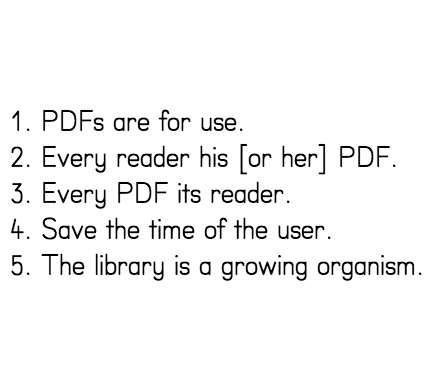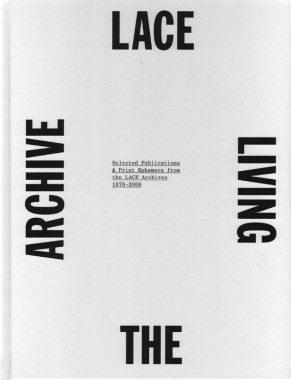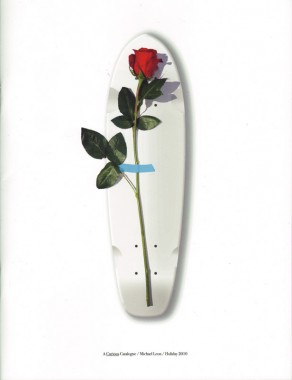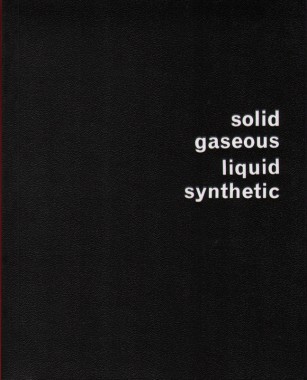The Serving Library
The first libraries were built on an Archiving model. In the Archiving Library, information and artifacts were collected, concentrated and protected in one central place. On July 1, 1731, Benjamin Franklin established the first Circulating Library in Philadelphia. Books were quite expensive, so by pooling resources many volumes could be shared among contributing members, and, the books moved around. Now, we propose a new model that joins the Archiving Library to the Circulating Library — The Serving Library.
The Serving Library is an archive assembled by publishing. Publishing and archiving have always been either end of a continuous loop, but now on an electronic network like the Internet, the two activities are both simultaneous and indistinguishable. This makes particularly small public libraries increasingly redundant. It’s time to reconsider what kind of library makes sense right now, and suggest one possible way forward.
The Serving Library follows directly from ten years of independently publishing Dot Dot Dot (www.dot-dot-dot.us), a biannual arts journal printed in a run of 3000 copies, with broad international distribution co-founded by Stuart Bailey in 2000. Dot Dot Dot then led to establishing Dexter Sinister (www.dextersinister.org) in 2006, a self-described “Just-in-Time Workshop and Occasional Bookstore” run from a modest basement on the Lower East Side of New York City. Evolving from a publication to a bookstore, we now want to expand from these relatively private activities to a more properly public sphere by developing a new library where materials are collectively produced, assembled and pooled to maintain a body of shared information that serves the committed community who helped make it.
We will build our library by publishing. Bulletins of the Serving Library will be a hybrid electronic / printed publication offered first as PDF files freely available, released in serial form on www.servinglibrary.org. Twice a year, these concise booklets will be collected, printed, bound and distributed. We’re ready to publish the first collection of Bulletins now. This first set directly addresses libraries, archives and collections and includes “An Octopus in Plan View” by Angie Keefer, an 8-part text on communication organized around the anatomy of an octopus; “From O-1: Information on Libraries & From 1-0: Information on Recording” by Rob Giampietro & David Reinfurt, on the paradox of contemporary archiving in the face of the Internet; and “The Life and Death of Media” by Bruce Sterling, an out-of-time plea for compiling an exhaustive list of outdated media formats.
We are asking for your support to help us develop the website, publish the PDFs, print, bind and distribute the first hard-copy issue of the Bulletins and to begin assembling The Serving Library.
A Curious Catalogue
Michael Leon, A Curious Catalogue
Softcover, 28 pp., offset 4/4, 195 x 255 mm
Edition of 1000
ISBN 978-3-905714-92-0
Published by Nieves
$16.00 ·
Michael Leon was raised in late 80s, early 90s skateboard culture. His work lives in a unique place between the worlds of art and art direction. He often uses the language of graphic design to create meaning through sculpture, paintings, videos, and editions. While still in high school, Michael designed his first pro model skateboard for New Deal Skateboards. 19 years later, he continues to design for his skateboard company Stacks, as well as creating artwork and art directing collaborative projects.
Rex Reason (solid gaseous liquid synthetic)
Simon Patterson, Rex Reason (solid gaseous liquid synthetic)
Softcover, 116 pp., offset 5/1, 105 x 130 mm
Edition of 2000
ISBN 978-1-870699-13-6
Published by Book Works
$16.00 ·
A loose logic prevails in the choice of names, for example names in red, gases, are from Greek myth or history and the yellow synthetic elements are given their proper names. However, Patterson disrupts this system with red herrings, mysteries and riddles that test the reader’s knowledge and that expose the inherent human desire to establish order and meaning.



